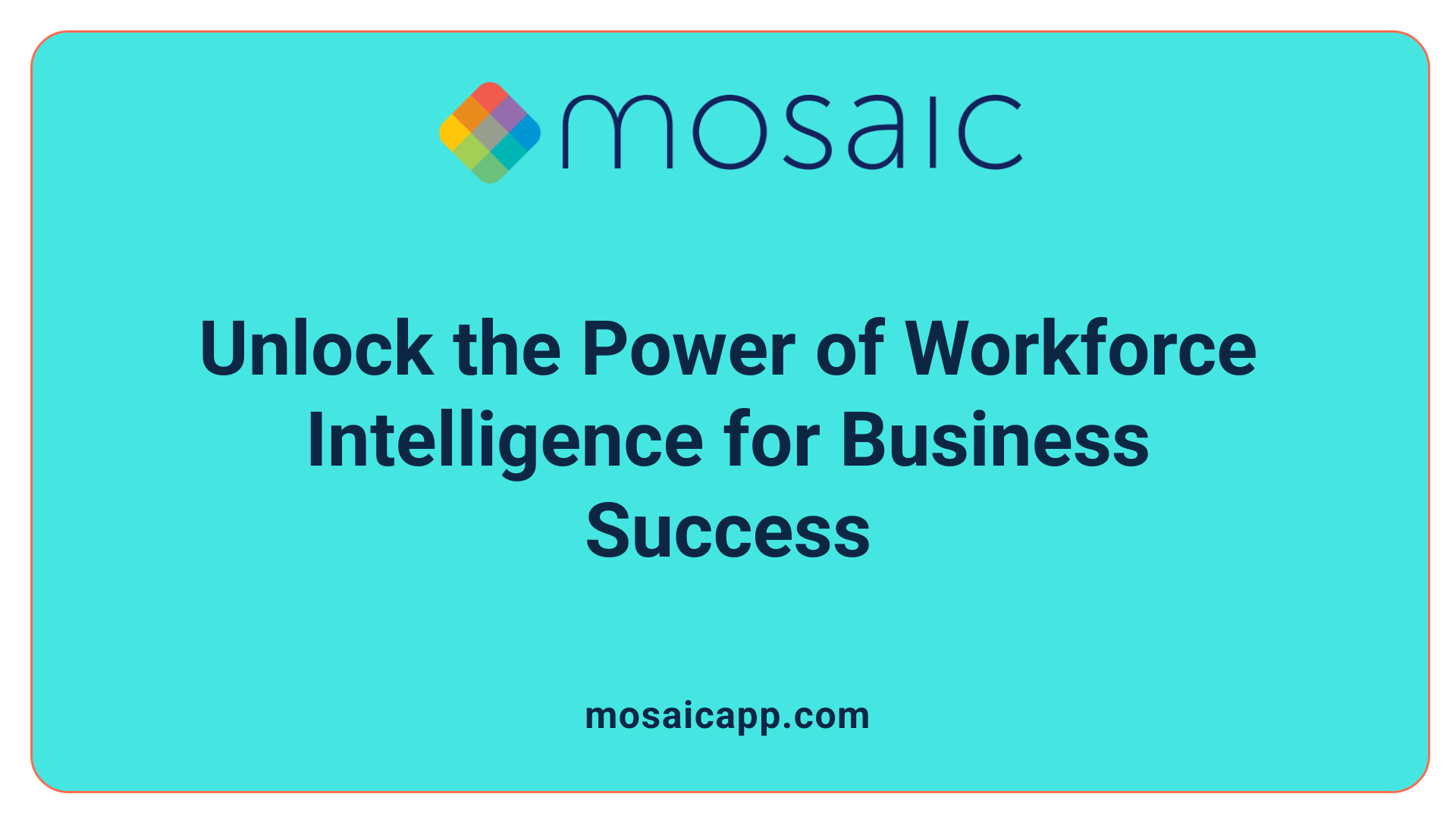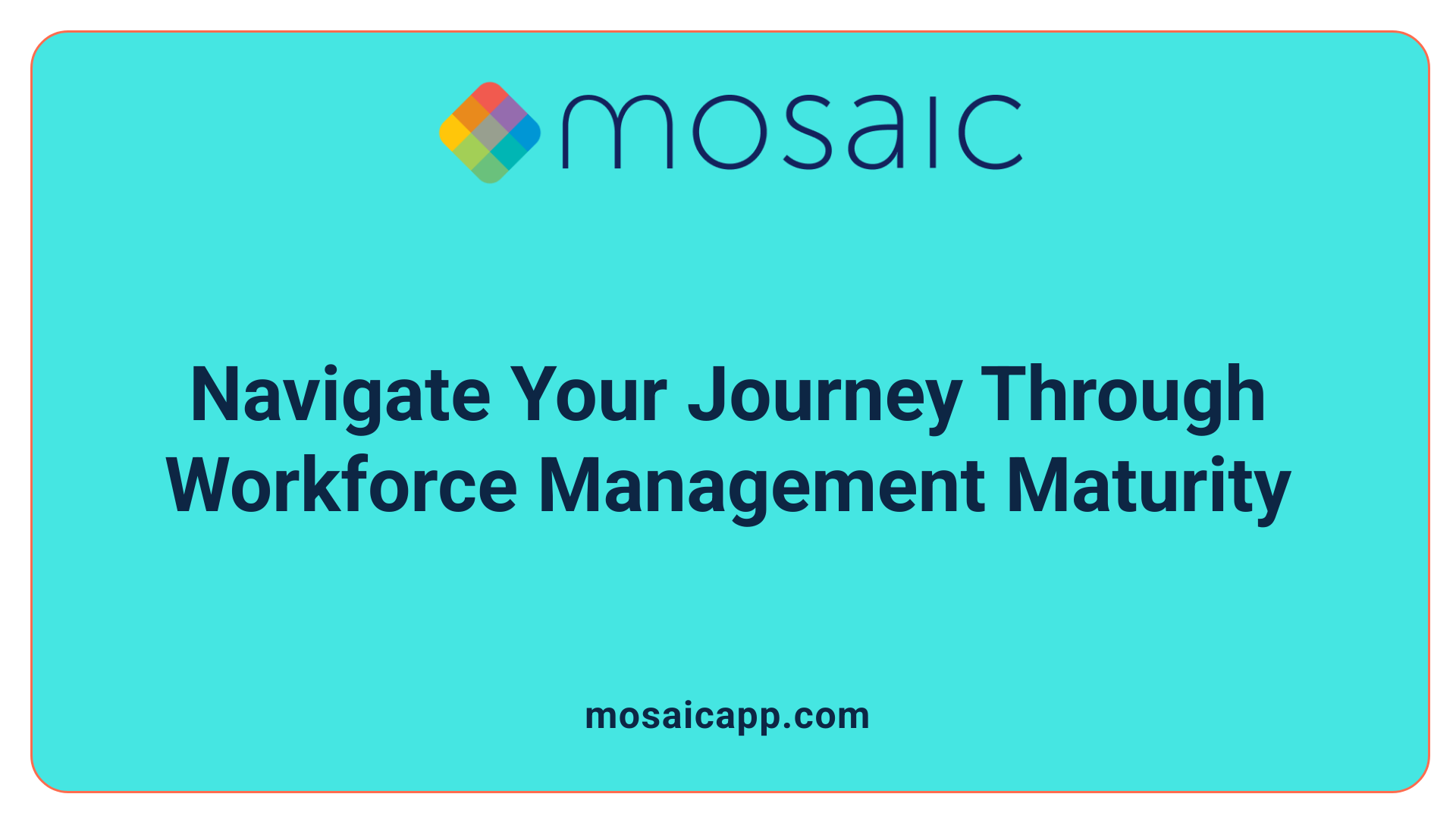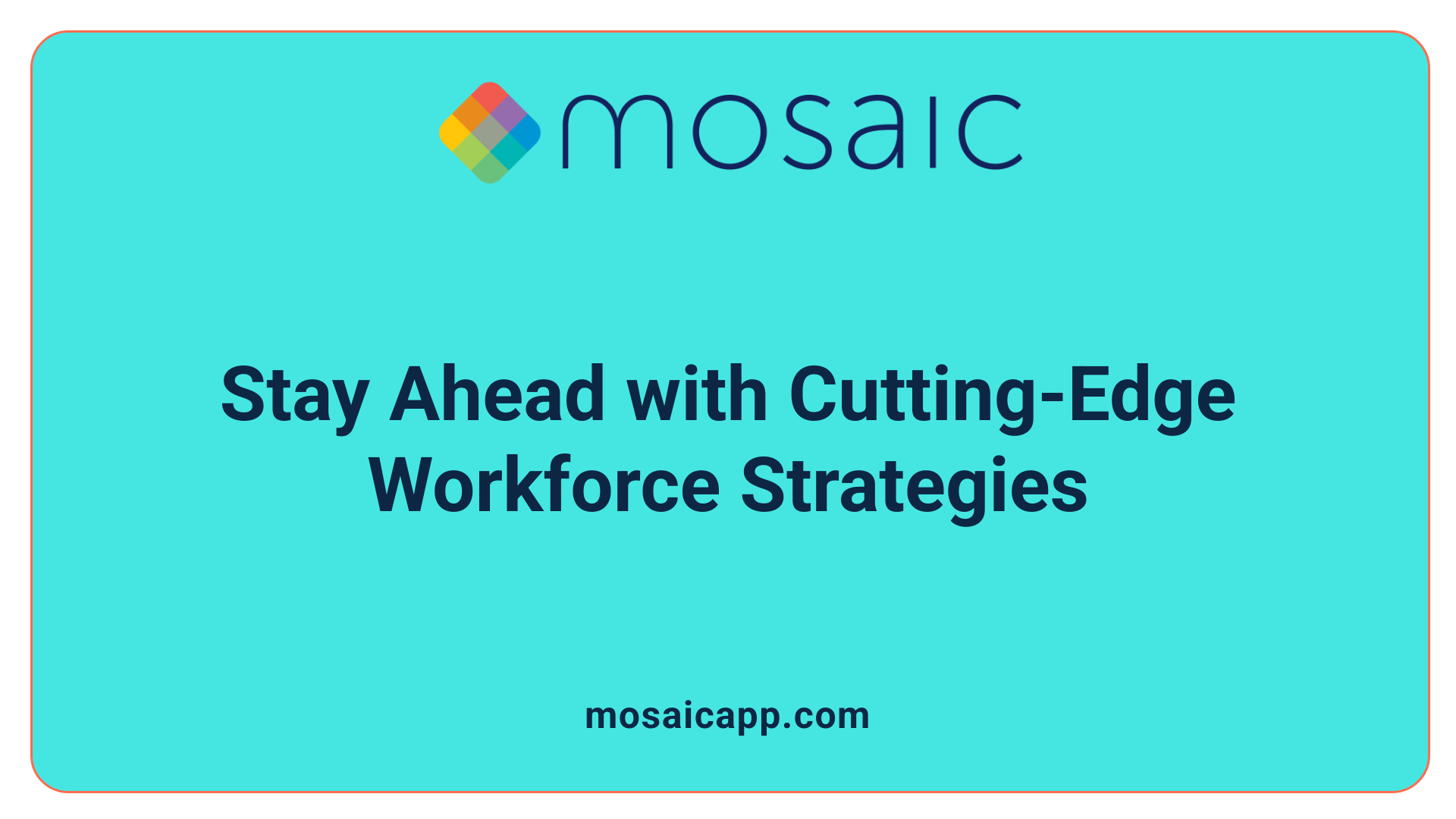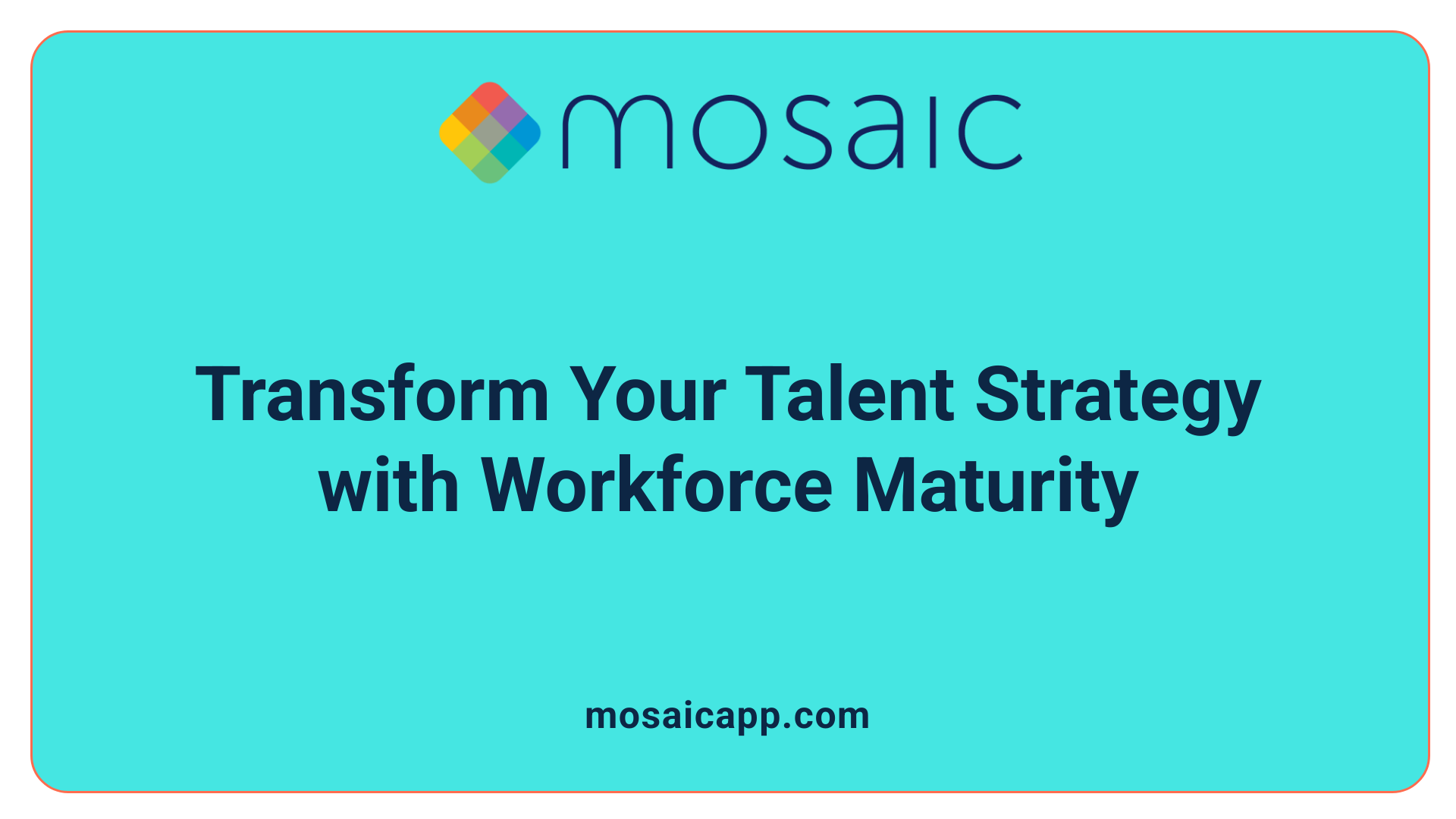Redefining Workforce Management in a Digital Age
Over recent decades, the landscape of workforce management has undergone a profound transformation. From traditional resource allocation focused on efficiency, organizations now harness sophisticated technologies like AI and analytics to cultivate a dynamic, intelligence-driven approach. This shift from resource management to workforce intelligence signifies a strategic evolution, enabling organizations to anticipate talent needs, foster agile workforces, and sustain competitive advantages in an ever-changing global economy.
Understanding Workforce Intelligence and Its Significance

What is workforce intelligence and why is it important?
Workforce intelligence is an advanced, data-driven approach that uses artificial intelligence (AI) and analytics to gather, analyze, and interpret detailed employee data. This includes skills, experience, goals, and workplace trends. Unlike traditional HR methods, workforce intelligence offers real-time insights into how an organization’s workforce is evolving. For example, it can identify skills gaps, forecast talent needs, and highlight potential risks that could impact business continuity.
This technology is vital for modern organizations aiming to stay competitive in a rapidly changing environment. It helps HR and leadership make smarter decisions about hiring, training, and succession planning. By providing a comprehensive picture of current workforce capabilities and future needs, workforce intelligence supports more strategic talent management.
It also facilitates proactive internal mobility, guiding employees toward growth opportunities that match their skills and aspirations. Advanced predictive capabilities allow organizations to plan for emerging skills requirements and automate routine tasks, freeing up human resources for strategic initiatives. Overall, integrating workforce intelligence enhances operational efficiencies, boosts employee engagement, and ensures fair, data-backed decision-making, making it an essential component of contemporary business strategies.
The Evolution of Workforce Management: From Tasks to Insights

How has the approach to resource management evolved into workforce intelligence?
The way organizations manage their human resources has undergone a significant transformation over the past few decades. In the 1980s, resource management was primarily focused on basic tasks like scheduling, time tracking, and cost control. These early systems aimed to optimize efficiency in a reactive manner, using straightforward tools such as forecasting and resource allocation spreadsheets.
As businesses grew more complex, the 2000s saw a shift towards broader performance metrics, quality management, and employee engagement initiatives. HR systems became more sophisticated, integrating data related to employee performance, skills, and satisfaction. However, many of these systems still worked in silos, limiting their ability to provide a comprehensive view of workforce dynamics.
The current era marks a decisive move towards workforce intelligence—an advanced, data-driven approach that leverages artificial intelligence (AI), predictive analytics, and automation. Modern systems connect real-time employee data with organizational goals, enabling proactive decision-making. Tools now analyze patterns to forecast staffing needs, recommend learning opportunities, and support career development,
This evolution has empowered organizations to shift from reactive management—addressing issues after they occur—to predictive and prescriptive strategies. By anticipating future requirements and challenges, companies can better allocate resources, enhance employee engagement, and stay competitive.
Emerging technologies like AI-powered chatbots, digital twins of enterprise workforces, and cloud-native platforms further enhance this capability. They streamline data collection, improve accuracy, and facilitate faster decision-making. Today, workforce intelligence serves as a strategic asset, helping organizations adapt swiftly to market changes and technological advances.
In summary, the progression from simple task management to integrated AI-driven insights reflects a broader move towards intelligent, agile workforce strategies that prioritize both operational efficiency and employee experience.
Stages of Workforce Management Maturity and Progression
 As organizations evolve in their approach to workforce management, they progress through distinct maturity levels that reflect growing sophistication in data handling, automation, and strategic integration.
As organizations evolve in their approach to workforce management, they progress through distinct maturity levels that reflect growing sophistication in data handling, automation, and strategic integration.
Level 1: Basic scheduling and data collection At this initial stage, companies primarily focus on simple scheduling and manual data collection. This level relies on basic spreadsheets or manual logs to track employee shifts and basic information. There is little integration, and data is often siloed, making it difficult to extract meaningful insights or automate processes.
Level 2: Tracking planned vs actual work The second stage involves moving beyond basic scheduling to tracking planned work against actual performance. Organizations set work plans, then monitor how closely these plans are followed. This separation of scheduled and actual data usually occurs in different systems, which can lead to discrepancies and inconsistencies.
Level 3: Data integration and consistency At this level, organizations combine scheduling, time tracking, and performance data into a unified platform. This integration ensures data consistency and provides more comprehensive visibility into workforce activities. AI-powered tools can analyze this data to identify trends, skills gaps, and areas for improvement, laying the groundwork for strategic decision-making.
Level 4: Automated compliance and strategic alignment The most advanced stage features automation that ensures compliance with regulations and internal policies without manual oversight. Systems automatically monitor, compare, and address issues, freeing managers to focus on strategic initiatives. This level enables real-time insights, predictive analytics, and scenario planning, aligning workforce management closely with organizational goals.
| Maturity Level | Focus Area | Key Features | Benefits |
|---|---|---|---|
| Level 1 | Basic data collection | Manual scheduling, logs | Foundation for data gathering |
| Level 2 | Tracking actuals | Planned vs actual work in separate systems | Improved performance oversight |
| Level 3 | Data integration | Unified platforms, AI analysis | Better insights, consistency |
| Level 4 | Automation & strategic alignment | Automated compliance, real-time analytics | Proactive management, strategic agility |
Achieving higher maturity levels requires ongoing technological integration, process improvement, and alignment with broader organizational objectives. These stages reflect the journey from manual, reactive management to a proactive, automated, and strategic workforce management approach, crucial in the age of digital transformation.
Emerging Trends and the Future of Workforce Management

What are emerging trends and future directions in workforce planning and management?
The landscape of workforce management is rapidly evolving, driven by technological innovations and shifting global priorities. Advanced tools like AI, automation, and digital platforms are becoming central to how organizations plan, assess, and develop their talent pools.
One significant trend is the integration of AI and automation, which are transforming roles and skill requirements. For instance, tasks related to data analysis, cybersecurity, and other digital skills are increasingly in demand. These technologies enable more precise talent sourcing and foster remote working capabilities, improving organizational agility.
Alongside technological shifts, broader digital transformation is affecting every aspect of work, from hiring to employee development. Companies are leveraging analytics and AI-driven insights to proactively predict workforce needs, identify skills gaps, and design future-ready teams.
Demographic and economic factors also influence these trends. As populations age and economic pressures mount, organizations emphasize resilience, green skills, diversity, and inclusion. These areas are now essential in creating a sustainable and adaptable workforce aligned with societal and environmental goals.
Workforce planning is becoming more scenario-based and predictive. By employing advanced analytics and stakeholder engagement, businesses aim to navigate uncertainties related to geopolitical shifts, automation impacts, and market fluctuations.
Looking ahead, the focus on continuous upskilling and reskilling will intensify, ensuring that employees' capabilities evolve alongside technological advancements. Additionally, fostering diversity and inclusion remains critical to innovation and competitiveness.
Innovative approaches to talent assessment, such as task intelligence and digital twin technology, are emerging to better model organizational scenarios. These tools facilitate faster decision-making and more strategic workforce alignment.
In summary, the future landscape will see organizations adopting a more strategic, resilient, and inclusive approach to workforce management, underpinned by AI and a proactive, scenario-driven mindset.
Leveraging AI and Data Insights to Accelerate Workforce Maturity
How does AI and data-driven insight impact workforce maturity and planning?
In today's rapidly evolving workplace, leveraging AI and data-driven insights is transforming how organizations manage and develop their workforce. These technologies enable companies to forecast talent needs with greater precision, identify skills gaps early, and tailor personalized development plans for employees.
AI-powered tools analyze vast amounts of employee data—such as skills, experience, goals, and performance—to create a dynamic understanding of workforce capabilities. This allows managers to anticipate future skills requirements based on industry trends, automation impacts, and strategic projects.
Predictive analytics, a core component of workforce intelligence, models future scenarios like turnover rates, performance fluctuations, and cultural shifts. Such insights support proactive decision-making, ensuring organizations can adjust hiring, training, and succession strategies before challenges materialize.
As AI continues to advance toward autonomous agents capable of complex reasoning and execution, routine tasks like data collection, analysis, and reporting become automated. This shift frees HR teams to focus on strategic initiatives related to talent growth and organizational agility.
Widespread employee familiarity with AI tools also encourages a cultural shift towards innovation. When workers trust and engage with AI-driven platforms, adoption accelerates, fostering a workforce that is adaptable and receptive to change.
Ultimately, harnessing AI and data insights results in workforce strategies that are more flexible, efficient, and resilient. These insights enable organizations to keep pace with technological disruptions, align talent capabilities with shifting business needs, and maintain competitive advantage.
| Aspect | Description | Impact |
|---|---|---|
| Talent Forecasting | Using AI to predict future skills and roles | Better resource planning |
| Skills Gap Analysis | Identifying current and emerging skill shortages | Focused upskilling |
| Personalization | Tailoring employee development | Increased engagement |
| Predictive Modeling | Scenario simulation for turnover and performance | Proactive workforce adjustments |
| Automation of Routine Tasks | Using AI for data and process management | Strategic focus and agility |
As organizations embrace these advanced capabilities, their workforce management becomes more aligned with future business landscapes, enabling sustained growth and adaptability.
Strategic Implications of Workforce Maturity for HR and Talent Management
 As organizations progress toward higher levels of workforce maturity, the strategic benefits for HR and talent management become increasingly significant.
As organizations progress toward higher levels of workforce maturity, the strategic benefits for HR and talent management become increasingly significant.
A core advantage is the ability to proactively manage skills gaps. Mature workforce intelligence systems enable HR teams to identify skill shortages early and implement targeted initiatives such as upskilling, reskilling, and hiring for emerging competencies. This proactive stance supports business transformation efforts, especially as companies integrate automation, AI, and digital technologies into their operations.
Furthermore, higher workforce maturity fosters a more strategic, data-driven approach to managing talent. Through real-time insights and predictive analytics, organizations can anticipate future workforce needs, plan effective talent pipelines, and respond swiftly to macrotrends like technological advances and shifting labor markets.
This evolution also enhances organizational agility. By utilizing scenario planning and flexible talent strategies, businesses can adapt rapidly to changes, minimizing disruption and maintaining competitiveness. Workforce maturity supports the development of an adaptive talent strategy that aligns closely with overall business objectives.
Transforming workforce management at this level encourages a culture receptive to change. Employing data-driven insights reduces resistance to new initiatives and fosters an environment of continuous improvement. Additionally, it promotes diversity, equity, and inclusion (DEI) initiatives, expanding access to diverse talent pools and strengthening organizational resilience.
Another critical aspect is the emphasis on employee well-being. Mature systems facilitate better insights into employee health and engagement, which is crucial for attracting and retaining top talent amid rising wage pressures and fierce competition.
In sum, advancing workforce maturity equips organizations with the tools to leverage technological innovations, craft forward-looking talent strategies, and sustain long-term performance. It positions HR as a strategic partner capable of enhancing agility, resilience, and innovation.
| Aspect | Benefits | Additional Details |
|---|---|---|
| Proactive Skill Gap Management | Early identification of skill shortages | Supports targeted development and hiring strategies |
| Support for Business Transformation | Facilitates alignment with tech integration | Enables swift adaptation to market and technological shifts |
| Enhanced Decision-Making | Data-driven insights and forecasting | Improves resource allocation and strategic planning |
| Organizational Agility | Flexibility in workforce planning | Adapts quickly to external and internal changes |
| Talent Pool Expansion | Promotes DEI initiatives | Broadens access to diverse talent and ideas |
| Employee Well-being Focus | Better understanding of health and engagement | Improves retention and attraction |
Progressing toward higher workforce maturity through strategic workforce planning and HR transformation with AI empowers organizations to stay competitive, innovative, and resilient in a rapidly evolving workplace landscape.
Building a Future-Ready Workforce: Strategies and Best Practices
Embedding Workforce Intelligence in Business Operations
Integrating workforce intelligence into daily operations helps organizations make smarter decisions about talent management. By leveraging AI-driven analytics, companies can visualize skills, roles, and workforce trends in real time. This visibility enables proactive planning, such as identifying skills gaps and automating routine tasks. As a result, business leaders can adapt quickly to changing market demands and technological advancements.
Continuous Learning and Upskilling
A future-ready workforce depends on ongoing development. Workforce intelligence highlights learning opportunities tailored to individual employee needs. This ongoing insight not only keeps employee skills current but also fosters a culture of continuous improvement. Companies can use this data to design targeted training programs, support career progression, and enhance overall productivity.
Scenario Planning and Agility
Effective workforce strategies must consider various future scenarios. Workforce intelligence tools facilitate scenario planning, allowing organizations to simulate impacts of automation, digital transformation, or market shifts. This flexibility ensures that talent strategies remain agile. By anticipating talent needs and capability gaps ahead of time, companies can redeploy resources, reskill employees, and stay competitive.
Additional Insights
| Strategy Area | Focus | Benefits | Implementation Tips |
|---|---|---|---|
| Business Operation Integration | Embed AI insights into workflows | Better decision-making and faster response times | Use scalable platforms and regularly update data |
| Learning & Development | Identify personalized learning paths | Improved skills and employee retention | Promote a culture of continuous learning |
| Scenario Planning | Use predictive analytics for future planning | Enhanced agility and resilience | Regularly review and adjust scenarios based on data |
The Path Forward in Workforce Strategy
As organizations navigate the complexities of digital transformation and rapid technological advancements, the evolution from traditional resource management to sophisticated workforce intelligence becomes imperative. Achieving higher maturity levels unlocks new capabilities for proactive, predictive, and strategic workforce planning. Embracing AI, predictive analytics, and integrated data platforms empowers organizations to build resilient, adaptable, and skilled workforces. The future of workforce management lies in continuous innovation, strategic alignment, and fostering a culture of learning and agility—keys to thriving in the innovative landscape of tomorrow.
References
- What is Workforce Intelligence and Why is it Important?
- The future of work is here: Why workforce intelligence ... - Aspect
- Workforce Intelligence 101: What It Is & Why It Matters
- The Role of Workforce Intelligence in Building a Future ...
- Strategic workforce planning in the age of gen AI
- AI & The Future of HR: Four Strategic Shifts Every Leader ...
- AI in the workplace: A report for 2025
- How Will AI Affect the Global Workforce?


